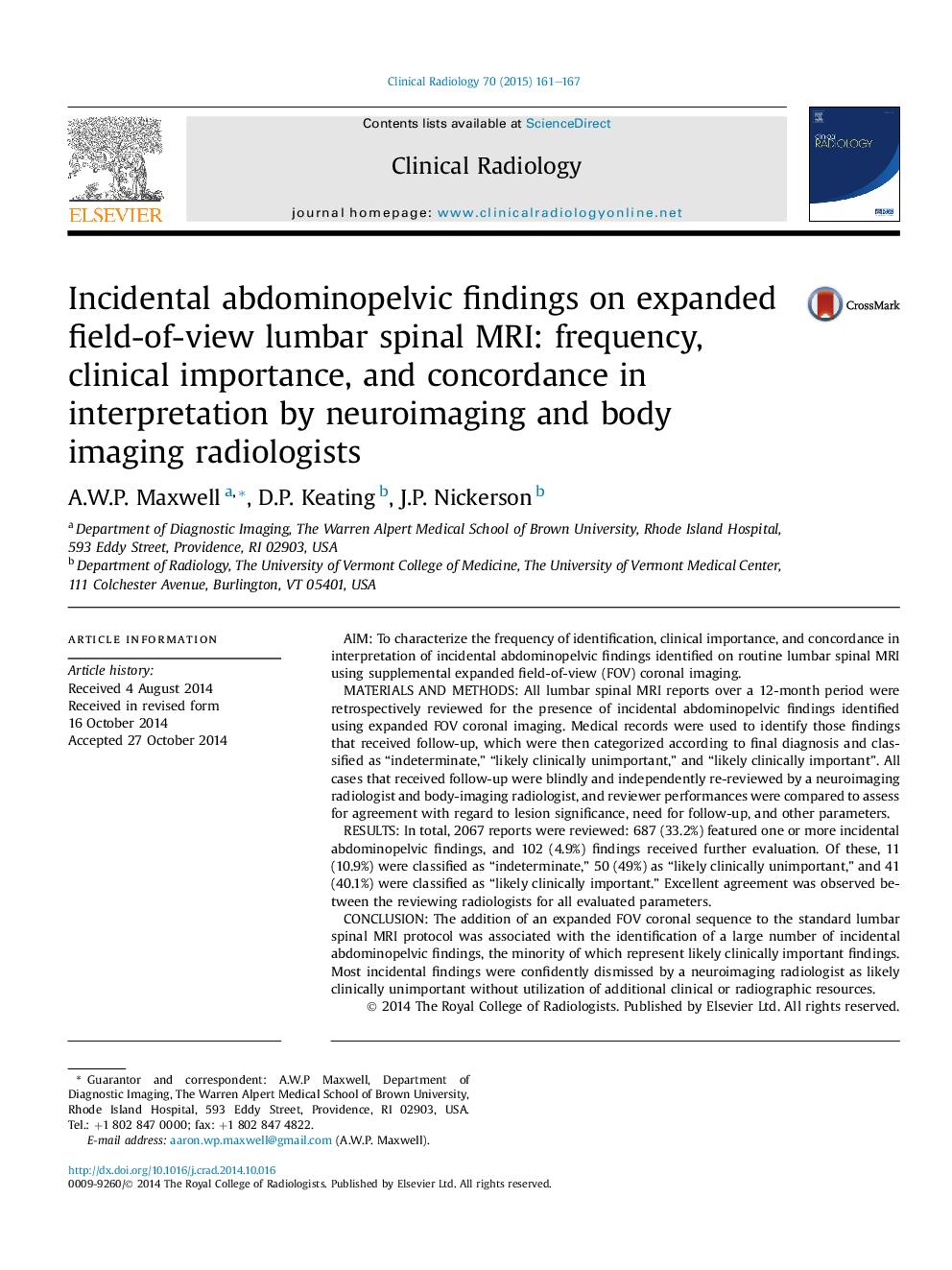| Article ID | Journal | Published Year | Pages | File Type |
|---|---|---|---|---|
| 6190993 | Clinical Radiology | 2015 | 7 Pages |
â¢Expanded field-of-view (FOV) MRI improves detection of important incidental findings.â¢Most incidental findings were confidently dismissed without additional testing.â¢Radiologists showed strong agreement when interpreting expanded FOV MR images.
AimTo characterize the frequency of identification, clinical importance, and concordance in interpretation of incidental abdominopelvic findings identified on routine lumbar spinal MRI using supplemental expanded field-of-view (FOV) coronal imaging.Materials and methodsAll lumbar spinal MRI reports over a 12-month period were retrospectively reviewed for the presence of incidental abdominopelvic findings identified using expanded FOV coronal imaging. Medical records were used to identify those findings that received follow-up, which were then categorized according to final diagnosis and classified as “indeterminate,” “likely clinically unimportant,” and “likely clinically important”. All cases that received follow-up were blindly and independently re-reviewed by a neuroimaging radiologist and body-imaging radiologist, and reviewer performances were compared to assess for agreement with regard to lesion significance, need for follow-up, and other parameters.ResultsIn total, 2067 reports were reviewed: 687 (33.2%) featured one or more incidental abdominopelvic findings, and 102 (4.9%) findings received further evaluation. Of these, 11 (10.9%) were classified as “indeterminate,” 50 (49%) as “likely clinically unimportant,” and 41 (40.1%) were classified as “likely clinically important.” Excellent agreement was observed between the reviewing radiologists for all evaluated parameters.ConclusionThe addition of an expanded FOV coronal sequence to the standard lumbar spinal MRI protocol was associated with the identification of a large number of incidental abdominopelvic findings, the minority of which represent likely clinically important findings. Most incidental findings were confidently dismissed by a neuroimaging radiologist as likely clinically unimportant without utilization of additional clinical or radiographic resources.
